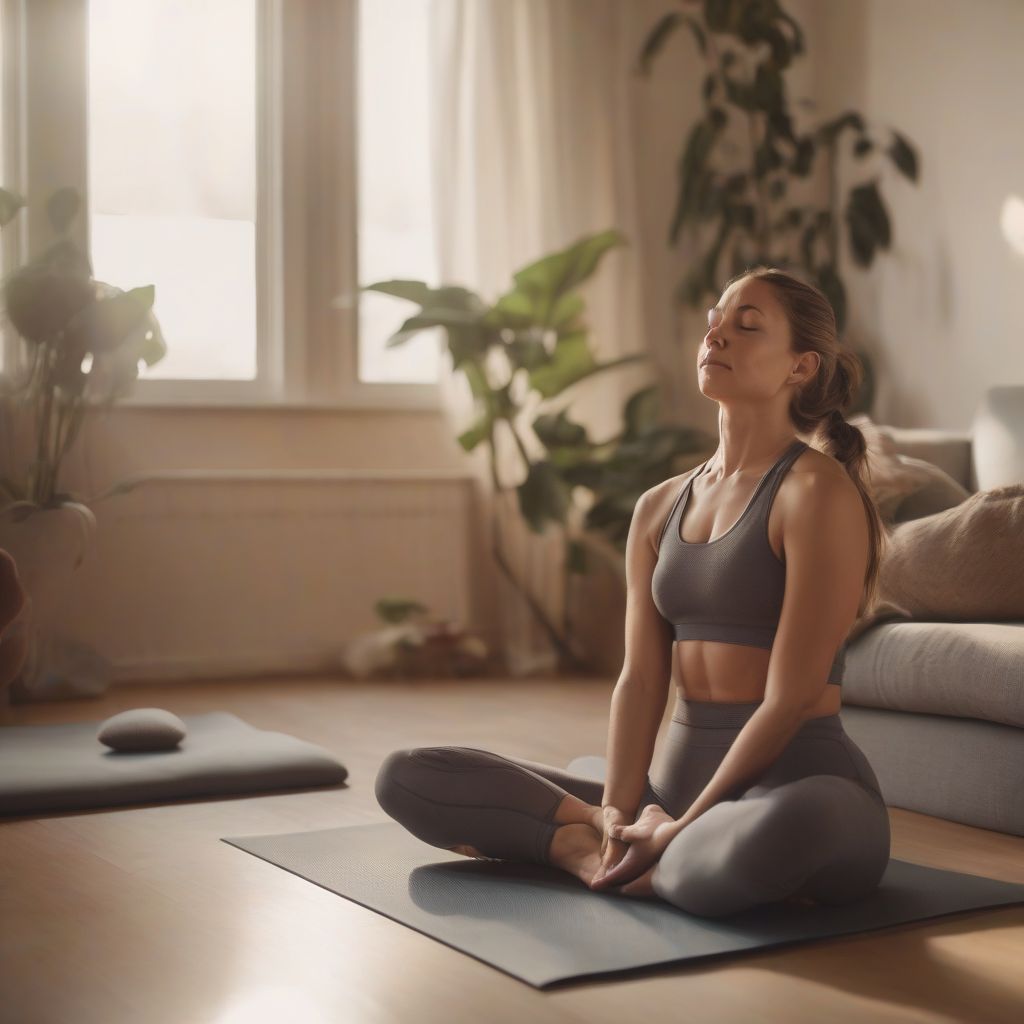Have you ever noticed how easily stress seems to creep into our lives? The demands of work, relationships, and daily life can leave us feeling overwhelmed and depleted. We yearn for moments of peace and tranquility, but finding them can feel like searching for an oasis in the desert. But what if I told you that there’s an ancient practice that can help you navigate the storms of stress and discover inner peace?
Understanding Stress and its Impact
Before we dive into the soothing world of yoga, let’s take a moment to understand the adversary – stress. Stress is your body’s natural response to challenging situations. It triggers a cascade of hormones, preparing you to either confront the situation (fight) or flee from it (flight). While a short burst of stress can be beneficial, chronic stress can wreak havoc on your physical and mental well-being.
Here are just a few ways stress can manifest:
- Physically: Headaches, muscle tension, fatigue, digestive issues, sleep disturbances.
- Emotionally: Anxiety, irritability, sadness, feelings of overwhelm.
- Mentally: Difficulty concentrating, racing thoughts, impaired memory.
How Yoga Combats Stress
Yoga, an ancient practice originating in India, offers a holistic approach to stress management. It’s not just about contorting your body into impressive poses; yoga is a mindful journey that connects your body, breath, and mind.
Here’s how yoga tackles stress:
1. Reduces Stress Hormones: Studies have shown that yoga can lower the levels of cortisol, the primary stress hormone. By reducing cortisol, yoga helps regulate your body’s stress response, preventing the harmful effects of chronic stress.
2. Activates the Parasympathetic Nervous System: Yoga, especially slower, more mindful styles like Hatha and Restorative yoga, activates the parasympathetic nervous system – your body’s “rest and digest” mode. This activation counteracts the “fight or flight” response triggered by stress, promoting a sense of calm and relaxation.
3. Improves Mood and Emotional Regulation: Yoga encourages self-awareness and helps you develop a deeper connection to your body and emotions. Regular practice can increase levels of GABA (gamma-aminobutyric acid), a neurotransmitter that promotes relaxation and reduces anxiety.
4. Enhances Focus and Clarity: By focusing on your breath and the present moment, yoga helps quiet the mental chatter that often accompanies stress. This increased focus and clarity can improve decision-making and reduce feelings of overwhelm.
 Woman practicing yoga for stress relief
Woman practicing yoga for stress relief
Stress-Busting Yoga Poses to Incorporate into Your Routine
Ready to experience the transformative power of yoga for stress relief? Here are some poses to get you started:
1. Child’s Pose (Balasana)
Benefits: This gentle, grounding pose releases tension in the back, shoulders, and neck, promoting a sense of safety and security.
How to: Kneel on your mat with your knees slightly wider than hip-width apart, big toes touching. Sit back on your heels (or use a blanket or pillow for support) and fold forward, resting your forehead on the mat. Extend your arms forward or relax them alongside your body, palms facing up. Breathe deeply and allow your body to soften with each exhale.
2. Cat-Cow Pose (Marjaryasana to Bitilasana)
Benefits: This dynamic flow gently stretches and mobilizes the spine, releasing tension in the back and promoting a sense of ease throughout the body.
How to: Start on your hands and knees in a tabletop position, wrists aligned under shoulders and knees under hips. As you inhale, arch your back like a cat, tucking your tailbone and drawing your belly button towards your spine. As you exhale, transition into cow pose by dropping your belly towards the mat, lifting your chest and gaze upwards. Continue flowing between these two poses for 5-10 breaths.
3. Legs-Up-the-Wall Pose (Viparita Karani)
Benefits: This restorative pose calms the nervous system, reduces anxiety, and relieves tired legs and feet.
How to: Sit sideways against a wall with your legs extended along the floor. Gently lower your back to the floor and swing your legs up the wall so that your body forms an L-shape. Rest your arms by your sides, palms facing up, and close your eyes. Hold for 5-15 minutes.
4. Standing Forward Bend (Uttanasana)
Benefits: This calming forward bend releases tension in the hamstrings, shoulders, and neck, while calming the mind.
How to: Stand with your feet hip-width apart. As you inhale, lengthen your spine and reach your arms overhead. As you exhale, hinge at your hips and slowly fold forward, keeping your back straight. Relax your head and neck and allow your hands to rest on the floor, shins, or hold opposite elbows. Hold for 5-10 breaths.
5. Corpse Pose (Savasana)
Benefits: This final resting pose allows your body and mind to fully absorb the benefits of your practice, inducing deep relaxation and reducing stress.
How to: Lie on your back with your arms by your sides, palms facing up, and legs extended. Close your eyes and soften your body, releasing any tension you may be holding. Breathe naturally and focus on the sensations in your body. Rest in this pose for 5-10 minutes.
[amazon bestseller=”yoga mat”]
Tips for Starting a Stress-Relieving Yoga Practice
-
Start Slowly: Begin with short sessions and gradually increase the duration as you build strength and flexibility.
-
Listen to Your Body: Yoga should never be painful. Modify poses as needed and honor your body’s limits.
-
Focus on Your Breath: Your breath is your anchor in yoga. Focus on the inhale and exhale to quiet the mind and deepen your practice.
-
Be Patient and Kind to Yourself: Yoga is a journey, not a destination. Don’t be discouraged if you find certain poses challenging. Meet yourself where you are with compassion and celebrate your progress.
Conclusion
Yoga offers a powerful and accessible path to stress relief and relaxation. By incorporating these poses and tips into your life, you can cultivate a sense of inner peace and navigate the challenges of life with greater ease and resilience. Remember, consistency is key – even a few minutes of yoga each day can make a world of difference in your well-being. So, unroll your mat, take a deep breath, and embark on your journey to a calmer, more centered you. Namaste.
